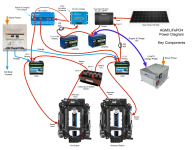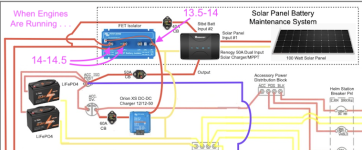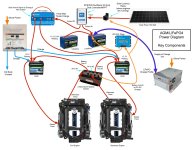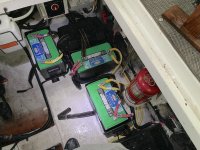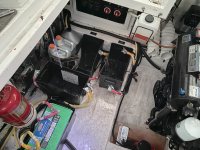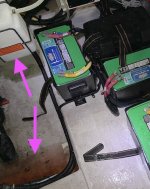I have decided to go with the approach of charging the LFP batteries, then let the LFP's the charge the AGM's. Since the LFP's 'rest' at about 0.5-0.8 volt higher than the AGM's, it might be a more effective approach . . . electrons going 'down hill' to my way of thinking. The features of the Dual Input Renogy charger are designed for a mixed battery system with solar and alternator charging, which simplifies things.
Here is my cleaned-up wiring diagram for those who have not fallen asleep yet. . .

.
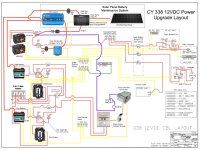
.
The Renogy charger is said to be butt-simple to set up and has some nice features . . . (Boy-genius

Will Prowse has a nice video on the unit)

- Solar input is favored over the alternator input
- The solar input activates when the Panel Voltage (PV) reaches 15V, (so it shuts itself off at night)
- The Renogy unit will take only 1/2 of its rated output from either source (Alt or Solar). So, for the 50 Amp unit it will only take 25 Amps from the alternator.
- When the 'House' battery is fully charged, the unit will trickle charge the starter battery via the second input (Batt/Alt input)
I plan to charge the AGM's (for when the boat is at the mooring) via the Victron Orion XS ( Xtra Smart) charger, which will get its power from the LFP batteries. I am going to set the input threshold on the Orion to about 13.5 volts, so charging of the AGM's will only happen when the LFP's are near 100%. As the LFP's get depleted (go below 13.5 volts) the charging of the AGM's will stop. I'll have to see how this threshold works in real-life
When the engine(s) are running the AGM's will get charged directly from the alternators and the LFP's will get charged as needed from a combination of solar and alternator sources.
Figuring this out has been sort-of-fun, but too much techy stuff for morning pre-coffee thinking.





















